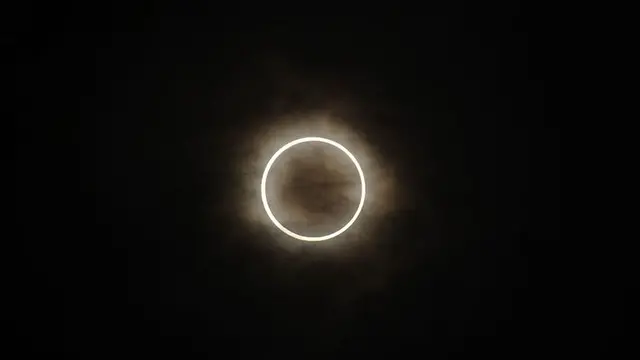A rare annular eclipse was visible to millions of people celebrating the longest day of the year this weekend.
An annular eclipse is when the moon aligns with the sun but is too distant from the Earth to fully block it.
The eclipse was visible during the summer solstice in the northern hemisphere along a narrow band stretching from the Republic of Congo in West Africa across to the Arabian Peninsula, India and through to eastern China.

Image:The eclipse was visible in Hong Kong
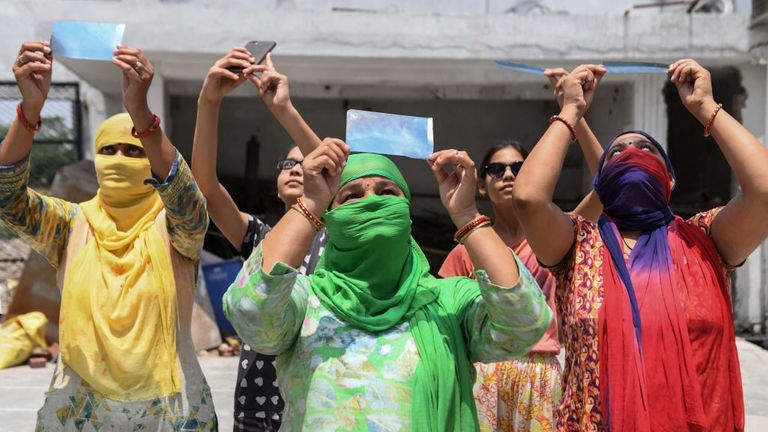
Image:Hindu devotees observed the eclipse through X-ray film at Durgiana Temple
Across the world people viewed the eclipse with varying degrees of success depending on how clouded the skies were and how close they were to the centre of the shadow.
Hindu devotees in India observed the eclipse through X-Ray films, presumably to prevent the most harmful aspects of the bright light around the edge of the moon from damaging their eyes.
Elsewhere people used tinted sunglasses to keep their eyes safe, while some - already protected by cloud cover - used telescopes to try and get a glimpse of the event.
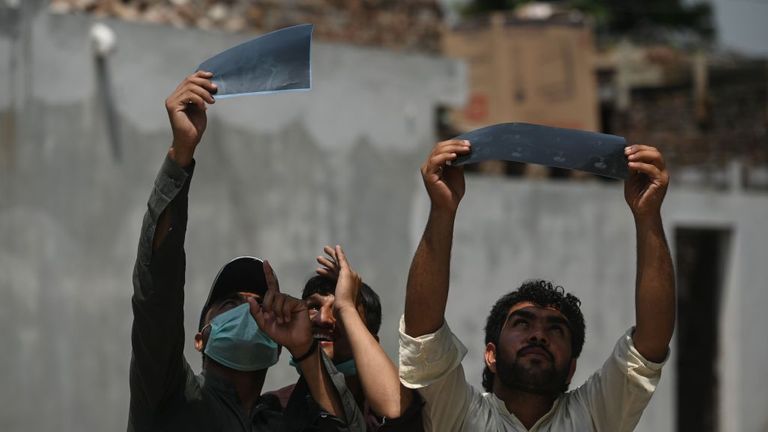
Image:Many of the X-Ray films had already been used
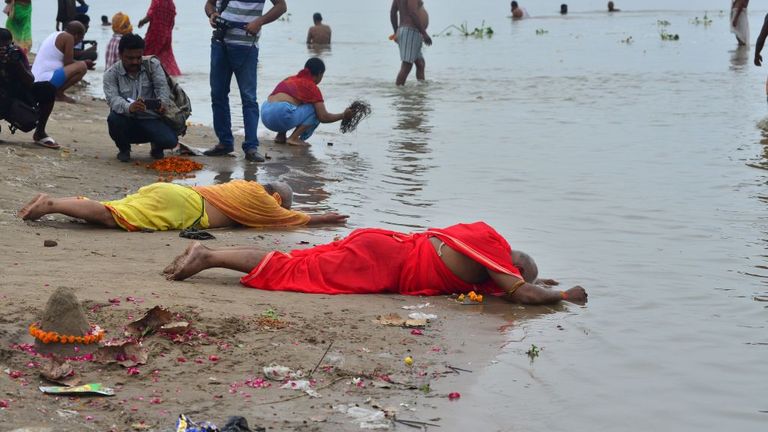
Image:Hindu devotees pray to the Sun God at the Sangam, where the rivers Ganges, Yamuna and mythical Saraswati converge
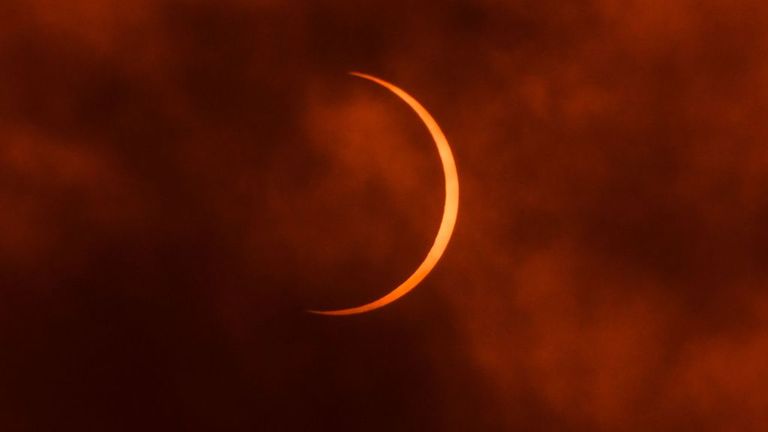
Image:In some areas clouds prevented a clear view
The eclipse passed directly over a dozen countries as the sun, moon and Earth aligned on the 21 June - with the partial eclipse being visible from many more.
Because the moon didn't completely block the sun it created a spectacular "ring of fire" of sunlight shining around it.
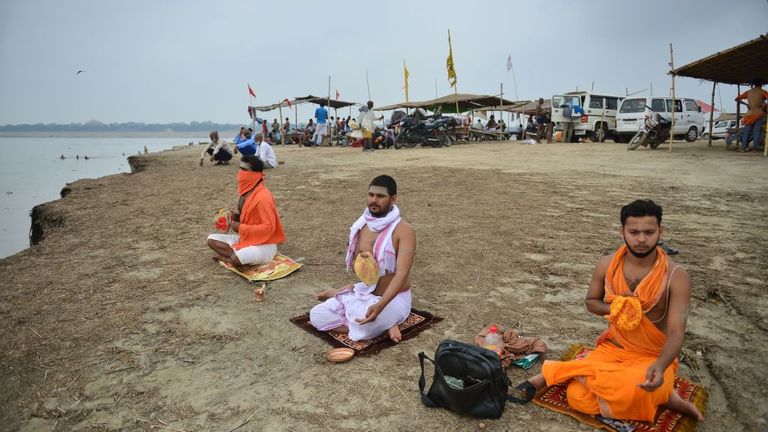
Image:Hindu worshippers enjoyed the event at the Ganges
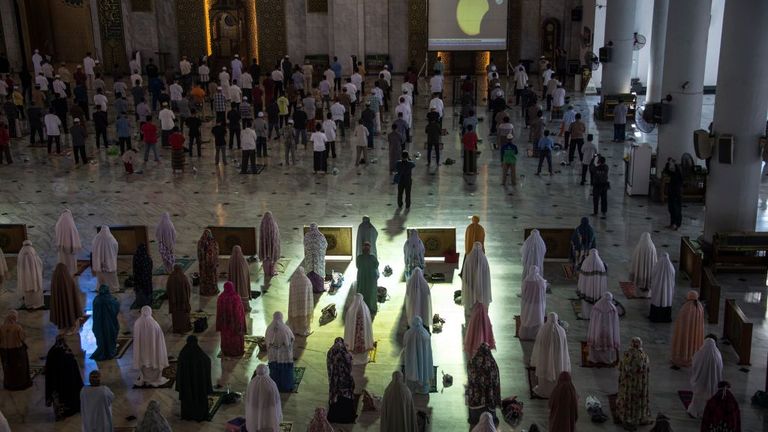
Image:Indonesian Muslims offered prayer during the eclipse
Later this year a total eclipse will be visible from South America, when the moon will completely occlude the sun.
This eclipse began in the Democratic Republic of the Congo, before moving across South Sudan, Ethiopia and Eritrea before leaving Africa.
It passed over the Red Sea into Yemen and then through Pakistan, northern India and China, before crossing Taiwan and ending in the Pacific Ocean.

Image:X-Ray film was used by many to view the eclipse
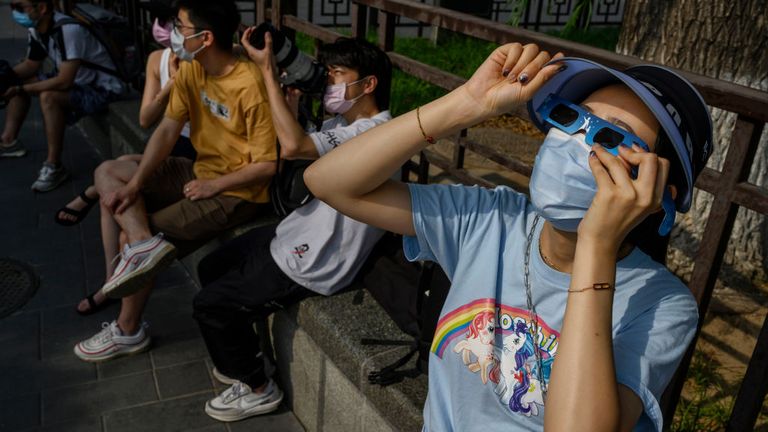
Image:Protective masks were popularly used in China
The numbers able to observe the eclipse were kept low by the coronavirus pandemic, which in many countries means people are being told to remain inside rather than come together in large outings.
The area of maximum eclipse - when a perfect halo of light was visible around the moon - took place near Uttarakhand, near India's border with China.
Last week
at least 20 Indian soldiers were killed
and more than 70 injured in a clash with Chinese forces near the Himalayan border between the two countries.
 简体中文
简体中文

